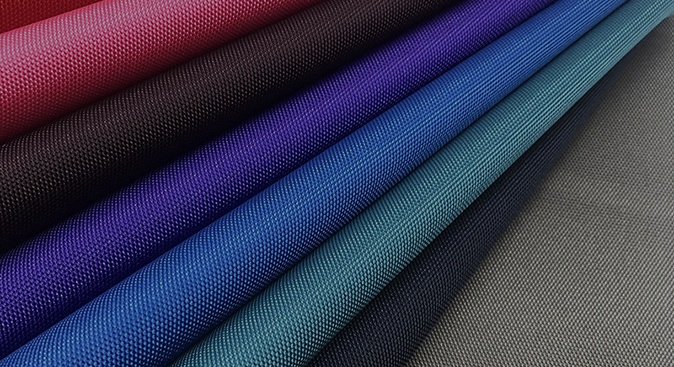Most people have difficulty distinguishing the differences and uses of Oxford fabric and canvas to the point where they cannot make a clear choice. But if you don’t distinguish it, then there will be a major mistake in the development and selection of products.
The biggest difference between Oxford fabric and canvas is not necessarily that one is better than the other, but rather that they are different types of fabrics with different characteristics and uses. Oxford fabric is generally lighter and has a more lustrous finish, while canvas is heavier and more durable. The choice between the two depends on the intended use and personal preference.
If you want to minimize your losses, you better take some time to keep reading.
Introduction
A Brief Explanation of Oxford Fabric and Canvas
Oxford Fabric:
Oxford fabric is a type of plain weave fabric that is made from combed or carded yarns. It is a lightweight fabric that is commonly used for shirts, blouses, dresses, and other clothing items. Oxford fabric is also used for bags, accessories, and home decor items.
Oxford fabric is a type of woven fabric that is commonly used in the manufacturing of bags, backpacks, tents, and other outdoor gear. It is made using a basketweave technique, which creates a durable and rugged fabric that is resistant to wear and tear.
The fabric is typically made from a blend of polyester and nylon fibers, which gives it excellent strength and durability. The exact composition of the fabric may vary depending on the manufacturer and intended use.
One of the key features of Oxford fabric is its unique texture. The basketweave pattern creates a distinctive crisscrossing of threads, which gives the fabric a textured appearance and makes it more resistant to abrasion.
Oxford fabric is also known for its water-resistant properties. The tight weave of the fabric helps to repel water and prevent it from soaking through, which makes it an excellent choice for outdoor gear such as tents and backpacks.
In addition to its functional properties, Oxford fabric is also popular for its aesthetic appeal. It is available in a range of colors and patterns, making it a versatile choice for a variety of applications.
Overall, Oxford fabric is a durable and versatile material that is ideal for use in a range of outdoor gear and accessories. Its unique texture, water-resistant properties, and range of colors and patterns make it a popular choice for designers and manufacturers alike.
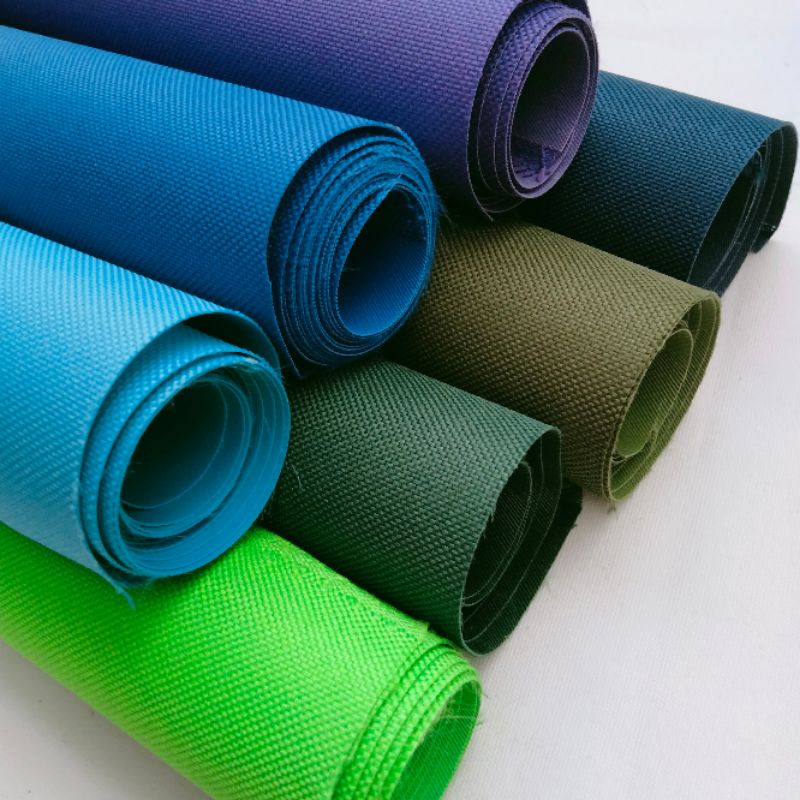
Canvas:
Canvas is a heavy-duty fabric that is made from cotton or linen. It is a plain weave fabric that is known for its durability and strength. Canvas can come in various weights and textures, with different levels of thickness and stiffness.
Canvas is commonly used for heavy-duty items such as tents, sails, tarps, backpacks, and shoes. It is also used for home decor items such as curtains, upholstery, and wall art.
Canvas is known for its rugged and textured appearance. It is made by weaving the weft yarns over and under the warp yarns, resulting in a strong and sturdy fabric. Canvas can also be treated with water-resistant coatings or wax to make it more resistant to water and other liquids.
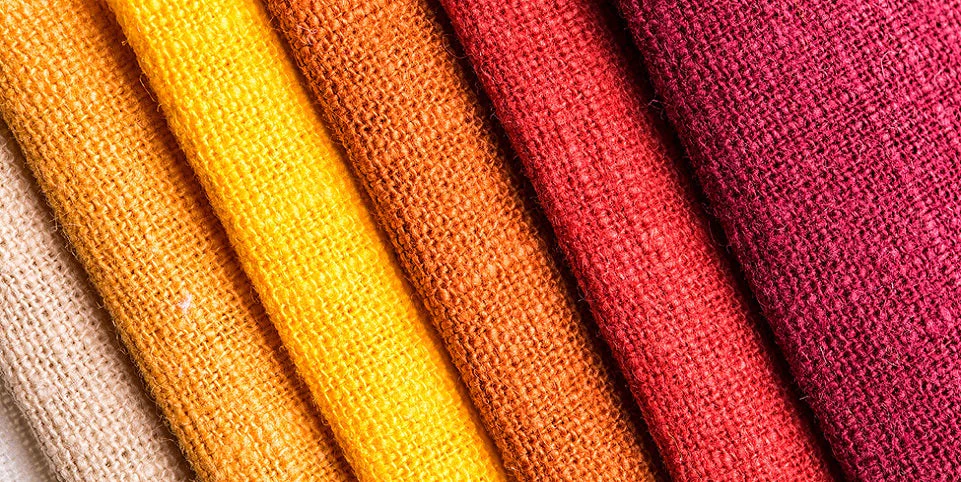
Difference Between Oxford Fabric and Canvas:
The main difference between Oxford fabric and canvas is their weight and texture. Oxford fabric is a lightweight fabric that has a smooth texture, while canvas is a heavy-duty fabric that has a rough texture.
Oxford fabric is more commonly used for clothing and accessories, while canvas is more commonly used for heavy-duty items such as tents, backpacks, and shoes.
In terms of construction, oxford fabric has a basketweave pattern, while canvas has a plain weave pattern. Oxford fabric is also known for its textured appearance, while canvas is known for its rugged appearance.
Purpose of the Outline:
The purpose of this outline is to provide a detailed explanation of Oxford fabric and canvas, highlighting their characteristics, uses, and differences. This information can be useful for those who work in the textile industry, fashion industry, or product design, as well as for individuals who are interested in purchasing items made from these materials. By understanding the unique properties of Oxford fabric and canvas, individuals can make informed decisions when choosing the right material for their needs.
Durability
Oxford fabric is a type of woven textile known for its exceptional durability and strength. This fabric is made by weaving thick yarns in a basket-weave pattern, creating a tightly woven structure that gives it exceptional strength compared to other fabrics. In this article, we will explore in detail the three key points that make Oxford fabric stand out as a more durable and reliable fabric compared to canvas, and provide some examples of where it is commonly used.
Oxford Fabric is Stronger than Canvas due to its Tightly Woven Structure
Oxford fabric is stronger than canvas due to its tightly woven structure. The fabric is made of thicker yarns that are tightly woven, creating a dense and durable fabric that can withstand heavy use and tough conditions. This makes it ideal for outdoor applications such as camping gear, backpacks, and outdoor furniture. For example, many high-end backpacks and luggage brands use Oxford fabric in their products due to its strength and durability.
Oxford Fabric is more Resistant to Wear and Tear than Canvas
Oxford fabric is more resistant to wear and tear than canvas. This is due to the tightly woven structure that makes the fabric more resistant to abrasion and damage caused by friction. The tightly woven fabric also reduces the chances of loose threads and snags, which can weaken the fabric over time. This makes Oxford fabric an excellent choice for applications that require high durability, such as upholstery, sports equipment, and workwear. For example, many high-end workwear brands use Oxford fabric in their clothing due to its durability and strength.
Oxford Fabric is Less Likely to Stretch or Shrink than Canvas
Oxford fabric is less likely to stretch or shrink than canvas. Canvas fabrics tend to stretch and shrink over time due to their looser weave, which can be problematic in applications that require consistent sizing and shape. Oxford fabric, on the other hand, maintains its shape and size even after heavy use and washing. This makes it ideal for clothing and other applications where consistency in sizing and shape is essential. For example, Oxford fabric is commonly used in men’s dress shirts and women’s blouses due to its ability to maintain its shape and crisp appearance after multiple washes.
Overall, Oxford fabric is a superior fabric when it comes to durability and strength, making it an ideal choice for a wide range of applications. Its tightly woven structure makes it stronger, more resistant to wear and tear, and less likely to stretch or shrink compared to canvas. Some common examples of where Oxford fabric is used include backpacks, luggage, outdoor furniture, workwear, and dress shirts. If you’re looking for a fabric that can withstand tough conditions and heavy use, Oxford fabric is an excellent choice.

Water Resistance
Water resistance is an important property of fabrics, especially when it comes to outdoor activities. Oxford fabric and canvas are two commonly used materials that differ in their level of water resistance.
Oxford Fabric has a Higher Level of Water Resistance than Canvas
Oxford fabric and canvas are both popular materials used in the textile industry for various purposes, including making bags, shoes, tents, and clothing. However, when it comes to water resistance, Oxford fabric is known to perform better than canvas.
One of the reasons Oxford fabric has a higher level of water resistance than canvas is its tight weave. Oxford fabric is made by weaving multiple yarns in a basket weave pattern, resulting in a denser and tighter weave. This tight weave creates a barrier that makes it harder for water to penetrate the fabric, hence making it more water-resistant than canvas.
Another reason for the superior water resistance of Oxford fabric is the type of yarn used. Oxford fabric is made using a combination of cotton and synthetic fibers like polyester or nylon, which provide additional strength and durability to the fabric. The synthetic fibers also repel water, making the fabric more water-resistant than natural fibers like cotton used in canvas.
In contrast, canvas is made using a plain weave, which is looser than the basket weave used in Oxford fabric. This means that canvas has more open spaces between the yarns, which allows water to penetrate the fabric more easily. Additionally, canvas is mostly made using natural fibers like cotton, which do not repel water as well as synthetic fibers.
To illustrate the difference in water resistance between Oxford fabric and canvas, let’s consider the example of a backpack made from each material. If you get caught in the rain, the backpack made from Oxford fabric will be more likely to keep your belongings dry compared to the one made from canvas. The tighter weave and synthetic fibers in the Oxford fabric will prevent water from seeping into the bag, whereas water can easily penetrate the canvas and soak your belongings.
In conclusion, Oxford fabric is more water-resistant than canvas due to its tight weave and use of synthetic fibers. While canvas has its advantages, like its natural look and feels, it is not as effective in keeping water out as Oxford fabric. So if you’re looking for a material that can withstand rainy conditions or splashes of water, Oxford fabric is the better choice.
Oxford Fabric is Less Likely to Absorb Water than Canvas, which Makes it Quicker to Dry
The level of water resistance in a fabric is determined by its ability to repel water. When water comes into contact with a water-resistant fabric, it beads up on the surface of the fabric rather than being absorbed. This means that the fabric is less likely to become saturated and will dry more quickly.
Oxford Fabric is more Suitable for Outdoor Activities where Rain or Moisture may be a Factor
Oxford fabric is less likely to absorb water than canvas, which makes it quicker to dry. This property makes it more suitable for outdoor activities where rain or moisture may be a factor. For example, jackets made from Oxford fabric are ideal for hiking or camping trips where the weather can be unpredictable.
The choice between Oxford fabric and canvas will depend on the intended use of the fabric. If water resistance is a primary concern, then Oxford fabric is the better choice due to its tightly woven structure and ability to repel water. However, if water resistance is not a primary concern, then canvas may be a better choice due to its strength and durability.
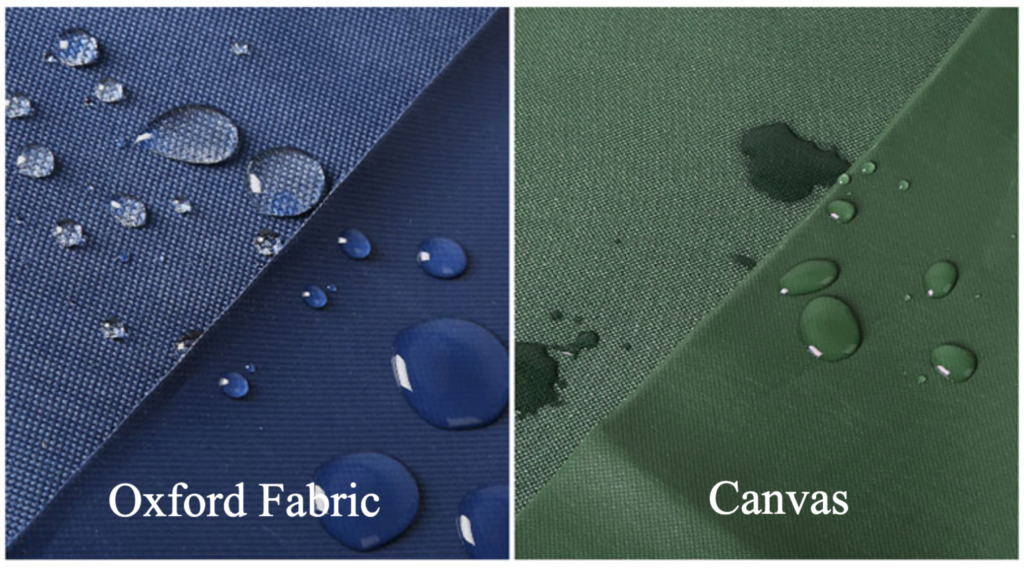
Appearance and Texture
Oxford fabric and canvas are two popular materials used for a variety of applications, ranging from clothing to heavy-duty equipment. Each material has its unique appearance and texture, making it suitable for different purposes.
Oxford Fabric has a Smooth and Shiny Surface that Gives it a Sleek Appearance
Oxford fabric is known for its smooth and shiny surface, which gives it a sleek appearance. The fabric is made from a combination of cotton and synthetic fibers, which gives it durability and strength. The fine texture of Oxford fabric makes it suitable for bags, luggage, and tents. It is also commonly used in the production of shoes and upholstery due to its strength and durability.
The sleek appearance of Oxford fabric is achieved through a unique weaving process, where the threads are woven in a basket-weave pattern. The weaving process creates a dense and tight fabric that is resistant to wrinkles, making it ideal for clothing that requires a crisp, polished look.
Canvas, on the other hand, has a rough texture that is better suited for heavy-duty applications. The material is made from cotton or linen fibers, which are tightly woven together to create a sturdy and durable fabric. Canvas is commonly used in the production of outdoor equipment, such as tents, backpacks, and tarps, as well as heavy-duty workwear, such as aprons and jackets.
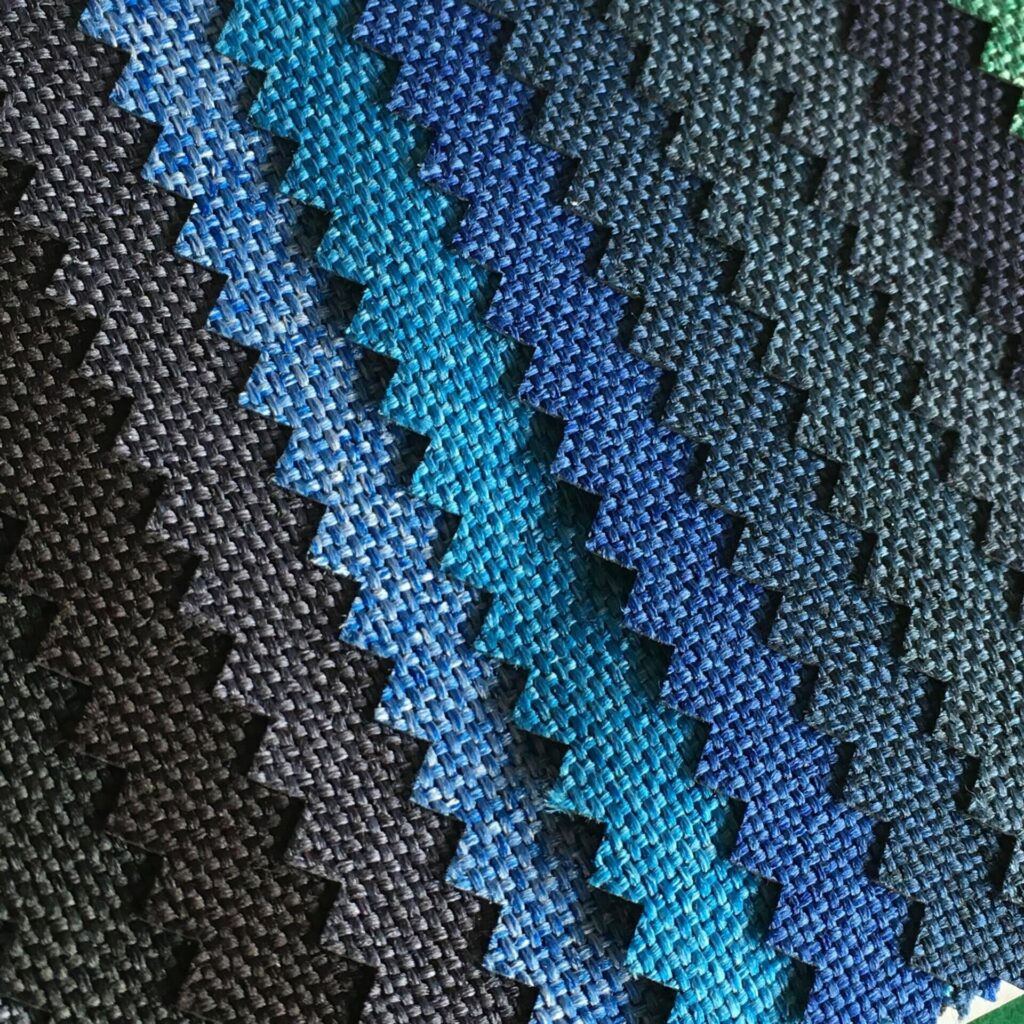
Canvas Has a Rough Texture that is Better Suited for Heavy-duty Applications
The rough texture of canvas is achieved through a plain weave pattern, where the threads are woven over and under each other in a simple criss-cross pattern. This creates a fabric that is strong, sturdy, and able to withstand heavy use.
Despite their differences in appearance and texture, both Oxford fabric and canvas have their unique advantages and disadvantages. Oxford fabric is lightweight, smooth, and easy to care for, but it may not be as durable as canvas. Canvas, on the other hand, is heavyweight, rugged, and extremely durable, but it may be too heavy and bulky for certain applications.
In conclusion, the choice between Oxford fabric and canvas ultimately depends on the intended use of the material. Oxford fabric is ideal for clothing and fashion accessories, while canvas is better suited for heavy-duty applications. Both materials have their advantages and disadvantages, and it is important to consider these factors when choosing between the two.

Weight
When it comes to fabric, weight is an important factor to consider. Oxford fabric and canvas are two popular materials used for various applications, and they differ in terms of weight.
Oxford Fabric is Generally Lighter than Canvas
Oxford fabric is generally lighter in weight than canvas due to its composition of cotton and synthetic fibers. The combination of these fibers creates a fabric that is strong, durable, and lightweight, making it an ideal choice for applications that require a lightweight fabric. Oxford fabric is commonly used in the production of clothing, handbags, and luggage due to its lightweight nature. It is also a more convenient option for traveling or carrying items for an extended period because it does not add unnecessary weight to the load.
Canvas, on the other hand, is heavier in weight due to its composition of cotton or linen fibers. The tightly woven fibers create a fabric that is rugged, durable, and heavyweight, making it suitable for heavy-duty applications. Canvas is commonly used in the production of outdoor equipment, such as tents, backpacks, and tarps, as well as heavy-duty workwear, such as aprons and jackets.
Oxford Fabric is a more Convenient Option for Traveling or Carrying Items for an Extended Period
The weight of a fabric can affect its overall performance and functionality. A lightweight fabric like Oxford fabric is more suitable for applications that require mobility and ease of movement. This is why it is a popular choice for clothing and travel accessories. On the other hand, a heavyweight fabric like canvas is more suitable for applications that require durability and strength. This is why it is a popular choice for heavy-duty equipment and workwear.
When considering weight, it is important to also consider the intended use of the fabric. For example, if you are looking for a fabric to make a backpack, you may want to consider a lightweight fabric like Oxford fabric, which will not add unnecessary weight to the load. However, if you are looking for a fabric to make a tarp or a heavy-duty work apron, you may want to consider a heavyweight fabric like canvas, which will provide the necessary durability and strength.
In conclusion, the weight of a fabric is an important factor to consider when choosing between Oxford fabric and canvas. Oxford fabric is generally lighter in weight than canvas, making it a more convenient option for traveling or carrying items for an extended period. However, canvas is heavier in weight and more suitable for heavy-duty applications that require durability and strength. The intended use of the fabric should be considered when making a choice between the two.
Conclusion
Summary of the Advantages of Oxford Fabric over Canvas
Oxford fabric and canvas are two popular materials that are widely used for a variety of applications. While both materials have their unique advantages and disadvantages, Oxford fabric has several advantages over canvas that make it a popular choice for certain applications. In this article, we will summarize the advantages of Oxford fabric over canvas and provide recommendations for choosing Oxford fabric for appropriate applications.
Advantages of Oxford Fabric over Canvas:
Smooth and Polished Appearance: Oxford fabric has a smooth and shiny surface that gives it a sleek and polished appearance. This makes it a popular choice for clothing and fashion accessories such as shirts, blouses, dresses, and handbags. The fine texture of Oxford fabric also makes it ideal for screen printing, embroidery, and other types of embellishment. In contrast, the rough texture of canvas may make it difficult to achieve a polished appearance, especially when used for clothing or accessories.
Lightweight Nature: Oxford fabric is generally lighter in weight than canvas, which makes it a more convenient option for traveling or carrying items for an extended period. The lightweight nature of Oxford fabric also makes it ideal for applications that require mobility and ease of movement, such as clothing and luggage. In contrast, the heavyweight nature of canvas may make it too bulky or heavy for certain applications.
Ease of Care: Oxford fabric is easier to care for than canvas. It is less prone to wrinkles and can be machine washed and dried without losing its shape or structure. This makes it a popular choice for clothing and accessories that require low maintenance, such as travel bags, backpacks, and purses. In contrast, canvas may require special care and maintenance to prevent wrinkles, shrinkage, and fading.
Composition: Oxford fabric is typically made from a combination of cotton and synthetic fibers, which makes it strong and durable while still maintaining its lightweight and breathable properties. This makes it a popular choice for outdoor and sportswear, as well as for shoes and upholstery. Canvas, on the other hand, is typically made from cotton or linen fibers, which makes it more suitable for heavy-duty applications that require strength and durability.
Affordability: Oxford fabric is generally more affordable than canvas. While the price of both materials can vary depending on the quality and composition, Oxford fabric is generally a more cost-effective option for applications that require a lightweight and polished fabric. This makes it a popular choice for budget-conscious consumers who still want a high-quality and durable fabric.
Recommendations for Choosing Oxford Fabric for Appropriate Applications:
Clothing and Fashion Accessories: Oxford fabric is a great choice for clothing and fashion accessories that require a polished appearance and a lightweight fabric. It is suitable for shirts, blouses, dresses, and handbags, as well as for screen printing and embroidery.
Travel Bags and Luggage: Oxford fabric is a popular choice for travel bags and luggage because of its lightweight nature and ease of care. It is suitable for backpacks, duffel bags, and suitcases that require mobility and durability.
Outdoor and Sportswear: Oxford fabric is a popular choice for outdoor and sportswear because of its strong and durable composition. It is suitable for jackets, pants, and shoes that require breathability and moisture-wicking properties.
Upholstery: Oxford fabric is suitable for upholstery applications that require a strong and durable fabric. It is a great choice for sofas, chairs, and cushions that require a polished appearance and a lightweight fabric.
Budget-conscious Consumers: Oxford fabric is a great choice for budget-conscious consumers who still want a high-quality and durable fabric. It is suitable for a variety of applications and is more affordable than canvas.
In conclusion, Oxford fabric has several advantages over canvas that make it a popular choice for certain applications. When choosing Oxford fabric for appropriate applications, it is important.



